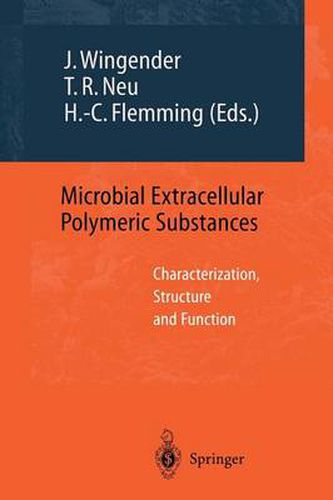Readings Newsletter
Become a Readings Member to make your shopping experience even easier.
Sign in or sign up for free!
You’re not far away from qualifying for FREE standard shipping within Australia
You’ve qualified for FREE standard shipping within Australia
The cart is loading…






This title is printed to order. This book may have been self-published. If so, we cannot guarantee the quality of the content. In the main most books will have gone through the editing process however some may not. We therefore suggest that you be aware of this before ordering this book. If in doubt check either the author or publisher’s details as we are unable to accept any returns unless they are faulty. Please contact us if you have any questions.
Microbial extracellular polymeric substances (EPS) are the key components for the aggregation of microorganisms in biofilms, flocs and sludge. They are composed of polysaccharides, proteins, nucleic acids, lipids and other biological macromolecules. EPS provide a highly hydrated gel matrix in which microbial cells can establish stable synergistic consortia. Cohesion and adhesion as well as morphology, structure, biological function and other properties such as mechanical stability, diffusion, sorption and optical properties of microbial aggregates are determined by the EPS matrix. Also, the protection of biofilm organisms against biocides is attributed to the EPS. Their matrix allows phase separation in biofiltration and is also important for the degradation of particulate material which is of great importance for the self purification processes in surface waters and for waste water treatment.
$9.00 standard shipping within Australia
FREE standard shipping within Australia for orders over $100.00
Express & International shipping calculated at checkout
This title is printed to order. This book may have been self-published. If so, we cannot guarantee the quality of the content. In the main most books will have gone through the editing process however some may not. We therefore suggest that you be aware of this before ordering this book. If in doubt check either the author or publisher’s details as we are unable to accept any returns unless they are faulty. Please contact us if you have any questions.
Microbial extracellular polymeric substances (EPS) are the key components for the aggregation of microorganisms in biofilms, flocs and sludge. They are composed of polysaccharides, proteins, nucleic acids, lipids and other biological macromolecules. EPS provide a highly hydrated gel matrix in which microbial cells can establish stable synergistic consortia. Cohesion and adhesion as well as morphology, structure, biological function and other properties such as mechanical stability, diffusion, sorption and optical properties of microbial aggregates are determined by the EPS matrix. Also, the protection of biofilm organisms against biocides is attributed to the EPS. Their matrix allows phase separation in biofiltration and is also important for the degradation of particulate material which is of great importance for the self purification processes in surface waters and for waste water treatment.